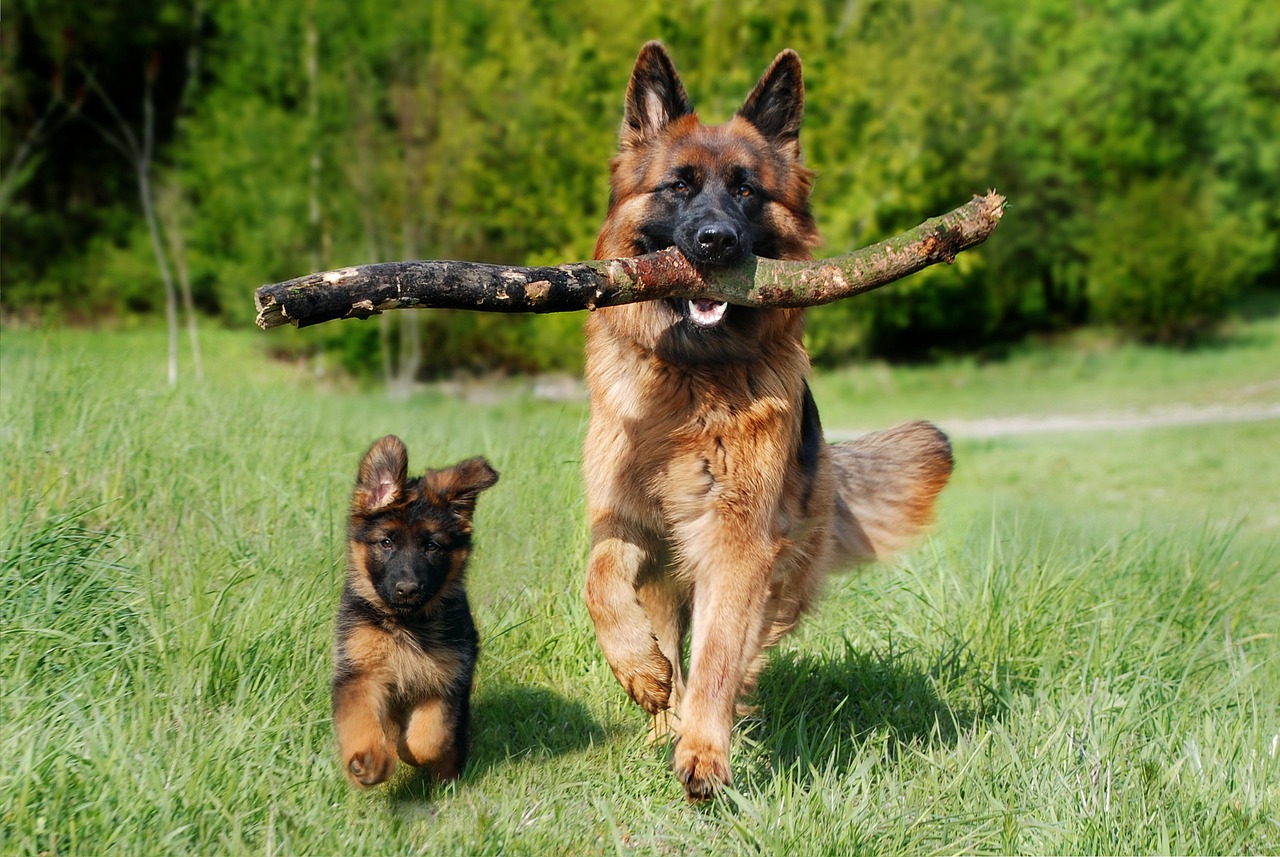
Decoding Doggy Weight: Identifying and Addressing Unhealthy Dog Weight
It’s not uncommon for your furry companion to sport a little extra fluff. Weight gain isn’t just a human struggle; our four-legged friends face it too. Surprisingly, a 2018 survey by the Association for Pet Obesity Prevention revealed that 55.8 percent of dogs in the United States are either overweight or obese. Unfortunately, carrying those extra pounds can lead to a host of health problems for your beloved pooch, such as canine diabetes, heart conditions, and the discomfort of painful arthritis.
Many dog parents fail to realize when their beloved companion has put on excess weight, as it often happens gradually and goes unnoticed. However, if you do notice your furry friend transforming into a plump pooch, it’s crucial to address the issue promptly. By taking action early on, you can prevent the onset of health conditions associated with canine obesity. Don’t wait until it’s too late—tackle the weight gain head-on and safeguard your dog’s well-being.
Let’s have a look at the key aspects related to identifying and addressing unhealthy dog weight.

Issues faced by dogs with unhealthy weight
Remember, each dog breed has its own unique challenges when it comes to weight management. By understanding the specific issues faced by your furry friend’s breed and taking proactive steps to address them, you can help them lead a healthier, more comfortable life.
Bulldog’s Breathing Troubles
Breeds like Bulldogs, with their adorable-wrinkled faces and short snouts, are prone to respiratory issues. When they carry excess weight, it puts additional strain on their airways, making it harder for them to breathe. Helping your Bulldog maintain a healthy weight is crucial for their respiratory health and overall well-being.
Labradors and Joint Pain
Labradors, known for their friendly and active nature, are prone to joint problems, especially when they’re overweight. The extra weight puts stress on their joints, leading to discomfort and increased risk of conditions like arthritis. By keeping your Labrador fit and trim, you can help prevent these painful joint issues and keep them happily active for years to come.
Dachshund’s Spinal Concerns
Dachshunds, with their long bodies and short legs, are susceptible to spinal problems. Carrying excess weight can exacerbate these issues, leading to back pain and potential disc problems. By managing their weight carefully, you can reduce the strain on their delicate spines and promote a healthier, pain-free life for your adorable Dachshund.
Poodles and Diabetes Risk
Poodles, known for their intelligence and elegant appearance, are at a higher risk of developing diabetes when they’re overweight. Extra weight interferes with their insulin regulation, leading to potential health complications. By helping your Poodle maintain a healthy weight through proper diet and exercise, you can reduce the risk of diabetes and ensure their long-term well-being.
Beagles and Heart Health
Beagles, with their keen noses and friendly personalities, can face heart problems when carrying excess weight. Obesity puts strain on their cardiovascular system, increasing the risk of heart disease and other related conditions. By keeping your Beagle in a healthy weight range, you’ll help safeguard their heart health and promote a longer, happier life by their side.

Factors leading to overweight dogs
Is your furry friend carrying a few extra pounds? It’s important to understand the factors that can contribute to canine weight gain. From portion control to breed-specific challenges, let’s explore the key factors that can lead to overweight dogs and how to address them for a healthier, happier pup.
Portion Control: Overfeeding is a common culprit behind canine weight gain. Breeds like Labradors, known for their voracious appetites, are particularly susceptible. Be mindful of portion sizes and consult your vet to determine the appropriate amount of food for your furry friend’s breed, age, and activity level.
Treat Temptations: Treats are a way to show love, but excessive treat-giving can contribute to weight gain. Breeds like Beagles, with their soulful eyes and pleading expressions, can make it difficult to resist those adorable faces. Opt for healthy, low-calorie treats and limit the quantity to prevent unwanted weight gain.
Lack of Exercise: A sedentary lifestyle is a major factor in canine obesity. Breeds like Bulldogs, known for their lower energy levels, require regular exercise to maintain a healthy weight. Engage in activities that suit your dog’s breed and energy level, such as brisk walks, interactive play sessions, or even swimming for water-loving breeds like Retrievers
.Genetic Predisposition: Some dog breeds, like Corgis and Basset Hounds, have a genetic predisposition to gaining weight. Their slower metabolism and tendency to overeat make weight management more challenging. Be aware of your breed’s specific needs and consult with your vet for tailored advice on diet and exercise routines.
Human Habits: Just like humans, dogs can pick up unhealthy eating habits from their owners. If your own eating habits are less than ideal, it’s important to be mindful of how they may influence your canine companion’s weight. Set a positive example by practicing healthy eating habits and incorporating regular exercise for both of you.
How to tell if your dog is in shape or overweight?
Maintaining a healthy weight is crucial for your dog’s well-being and longevity. Regular monitoring, proper diet, portion control, and regular exercise tailored to your dog’s breed and energy level are key. By being proactive and attentive, you can ensure that your furry friend stays fit, active, and happy for years to come.
Visual Assessment
Take a good look at your dog’s body shape. For breeds like Greyhounds, a slender and lean physique is normal. In contrast, breeds like Bulldogs may have a stockier build. Assess if you can clearly see your dog’s waistline and if their abdomen tucks up behind their ribs. If their body appears round or bulges out, it may be a sign of excess weight.
Ribs Check
Gently run your hands along your dog’s sides, feeling for their ribs. You should be able to feel them without applying too much pressure. Breeds like Chihuahuas may naturally have more prominent ribs, while thicker-coated breeds like Golden Retrievers may require more palpation. If you can’t feel their ribs easily, your dog may be overweight.
Fat Pads
Pay attention to fat deposits in certain areas. Breeds like Labradors tend to accumulate fat around the chest and neck area. If your dog has noticeable fat pads or rolls in these areas, it’s a potential sign of excess weight. Remember, you should be able to feel their muscles and bones beneath a thin layer of fat, not excessive padding.

Energy and Activity Level
Observe your dog’s energy and activity level. A healthy dog should be active and eager to play or go for walks. If your dog seems lethargic, tires easily, or lacks interest in physical activities, it could be due to excess weight. A well-exercised dog is usually a healthy dog.
Vet Consultation
Regular visits to the veterinarian are crucial. Your vet can provide an objective assessment of your dog’s weight and overall health. They may use body condition scoring systems tailored to specific breeds. Discuss any concerns you have about your dog’s weight and follow their guidance for a suitable diet and exercise plan.
Health Issues
Be aware of potential health issues associated with excess weight. Breeds like Dachshunds are prone to back problems, and extra weight can exacerbate these issues. Other breeds, like Cocker Spaniels, are susceptible to ear infections, which can be aggravated by excess weight. Keeping your dog in shape can help prevent or manage these breed-specific health concerns.
Developing a Dog Weight Loss Plan
Patience and consistency are key to a successful dog weight loss plan. Celebrate small milestones along the way and offer praise and rewards to keep your furry friend motivated. With your love, support, and a well-designed weight loss plan, you can help your dog achieve a healthier weight and improve their overall well-being.
Consult Your Vet
Begin by scheduling a visit with your vet to assess your dog’s current weight and overall health. They can provide guidance specific to your dog’s breed, age, and any underlying health conditions. For example, if you have a Labrador, your vet can advise on managing their weight while considering their genetic predisposition.
Establish a Realistic Target
Work with your vet to set a realistic weight loss target for your dog. Avoid drastic or rapid weight loss as it can be harmful. Instead, aim for a gradual, steady reduction in weight. Your vet can recommend a healthy weight range based on breed standards and your dog’s individual needs.
Adjust the Diet
Opt for a high-quality, balanced diet that is appropriate for your dog’s breed and weight loss goals. Your vet can help you determine the right portion sizes and recommend specific dietary options, such as weight management formulas. Measure meals accurately and avoid free feeding to ensure calorie control.
Exercise Routine
Engage your dog in regular exercise tailored to their breed and fitness level. Breeds like Border Collies thrive on high-energy activities like agility training, while smaller breeds like Shih Tzus may enjoy brisk walks. Gradually increase the duration and intensity of exercise sessions, making them fun and rewarding for your dog.
Monitor Progress and Adjust
Keep track of your dog’s weight and body condition regularly. Use visual and tactile assessments, such as checking their waistline and feeling their ribs. Adjust the diet and exercise plan as needed based on progress. Regularly consult with your vet to ensure you’re on track and make any necessary modifications.

To conclude
Developing a dog weight loss plan requires dedication and collaboration with your veterinarian. By setting realistic goals, adjusting the diet, incorporating regular exercise, and closely monitoring your dog’s progress, you can help them achieve a healthier weight. Remember, every dog is unique, so it’s essential to consider breed-specific factors and consult with professionals for tailored guidance.
With your commitment and their well-being in mind, you can embark on this journey to ensure your beloved furry companion leads a happier, healthier, and more active life. Together, you can make a positive impact on their overall quality of life and enjoy many joyful years together.

